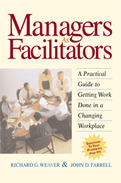2020
—Frances Hesselbein, former CEO, Girl Scouts of the USA, and Presidential Medal of Freedom recipient
Organizations now need to attract, retain, and motivate teams and employees across distance, time zones, and cultural differences. Building authentic and lasting human relations may be the most important calling for leaders in this century. According to management and global leadership specialist Maya Hu-Chan, the concept of “saving face” can help any leader preserve dignity and create more empathetic cross-cultural relationships.
“Face” represents one's self-esteem, self-worth, identity, reputation, status, pride, and dignity. Saving face is often understood as saving someone from embarrassment, but it's also about developing an understanding of the background and motivations of others to discover the unique facets we all possess. Without that understanding, we risk causing others to lose face without even knowing it. Hu-Chan explains saving face through anecdotes and practical tools, such as her BUILD leadership model (Benevolence, Understanding, Interacting, Learning, and Delivery). This book illustrates how we can give face to create positive first impressions, avoid causing others to lose face, and, most importantly, build trust and lasting relationships inside and outside the workplace.
2009
• The popularity of social enterprises has exploded in recent years – this is the authoritative guide to starting and running one
• Offers practical, from-the-trenches advice from two leading social entrepreneurs on confronting the challenges and seizing the opportunities social enterprises present
• The newest book in the Social Venture Network series – over 50,000 books in the series sold to date
All leaders have scores of things they could do. But a disciplined leader is one who identifies and focuses on the Vital Few: the 20 percent of activities that will drive 80 percent of the results. And the results that are most important are those tied to the organization's most precious asset: its people.
The Disciplined Leader offers fifty-two succinct lessons to help you home in on your own Vital Few in three critical areas: leading yourself, leading your team, and leading your organization. Each lesson comes with recommended tactics and practical “Take Action!” tips for implementing it, so there are literally hundreds of pieces of must-know, time-tested advice here. The chapters are self-contained, so you can read them in any order and come back to the ones that resonate with you—your own Vital Few! This is a hands-on, nuts-and-bolts guide to leadership practice that's built to inspire action, drive change, and achieve results.
2017
Millennials have been condemned as lazy, entitled, disloyal, and disrespectful and needing constant hand-holding. But Crystal Kadakia—a Millennial herself as well as an organizational development consultant and two-time TEDx speaker—shows that not only are these negative stereotypes dead wrong, but each one conceals a positive workplace practice that forward-looking companies must adopt if they are to endure. She illuminates how the advent of digital technology is the crucial root cause of many Millennial behaviors and offers a guide for what our traditional workplace needs to do to attract, engage, and retain modern talent.
Shows how managers can develop the talents of their employees naturally, efficiently and effectively.
-
Shows how managers can readily embed talent development into their day, going well beyond the usual coaching and training programs--an incredible complement to talent management systems
-
Offers five exceptional development practices derived from research with managers and professionals at twenty-eight companies
-
Filled with real examples and easily accessible advice
Most organizations report that talent is the key to their success. Yet they struggle mightily to develop their workforce. McKinsey's ten-year follow-up to its famous "War for Talent" concluded that heavy instruments in talent managements processes have been "insufficient, superficial, and wasteful." Managers consistently say they don't feel they have the time or skills to do the job. Even if they want to develop their people--they are overloaded just meeting their numbers.
Some managers, however, are able to deliver business results and develop their people in significant ways. Wendy Axelrod and Jeannie Coyle studied these "Exceptional Development Managers" in companies like Adidas, Microsoft, Siemens, Merck, Corning, and Kraft. The authors uncovered five practices these managers shared. Without fail they integrated development into day-to-day work, rather than making it a separate event. They leveraged the importance of emotions and trust in making work more developmental. They helped their staff find the right development partners. They taught their people how to increase their impact by navigating organizational politics. And they infused their departments' environment with abundant development opportunities. In all, these managers' efforts were deliberate, resourceful, and continuous.
Axelrod and Coyle offer a wealth of real-life examples and specific techniques to help readers apply these practices for themselves. Working in this way not only pays huge dividends for managers' employees and organizations--it makes the manager's job far richer and more rewarding.
Today's managers are confronted with increasing pressure to produce more with fewer resources. In this pressure-packed environment, managers are finding that the old "direct-and-control" model simply does not work. People need more freedom to make decisions, respond quickly to their customers, and work together more effectively. Successful managers have learned how to use the role of facilitator to help people exercise this freedom to produce the results needed by their organizations.
Managers As Facilitators presents a new, easy-to-understand model of facilitation that focuses on getting work done. It provides practical guidance for managers and leaders who need to be successful in this new role. Weaver and Farrell show managers how to use themselves in new ways, capitalize on group dynamics, and build effective work processes. They explain that to become a successful facilitator, one must recognize and use the four key elements of the facilitation model:
1. Task: Facilitators are clear about the work that groups must complete; task drives the actions of effective facilitators.
2. Self: Facilitators learn how to use themselves to help groups complete their tasks; facilitators do this by both using their own personal thoughts and feelings as a "barometer" for groups and modeling the types of behavior expected from others.
3. Group: Facilitators help groups understand the difference between normal interactions and those that are a problem; facilitators also help groups capitalize on conflict, rather than be disabled by it.
4. Process: Facilitators use three fundamental processes to help groups: planning, solving problems, and completing work; facilitators are skilled with a number of facilitation tools, using them to help groups run effective meetings, finish projects, etc.
Managers As Facilitators offers readers practical ways to manage change and organizational boundaries to achieve the results they want. The authors explain how individuals, groups, and organizations experience change and work with boundaries-and what facilitators do to help. The book's final chapter synthesizes all the material by presenting "Quick Fixes" to common problems.
- Offers a practical, effective program to help transform leaders and managers in all types of organizations into skilled facilitators
- Teaches managers the facilitation skills they need to help their organizations improve productivity
- Includes real-life examples from manufacturing, telecommunications, health care, education, retail and other service businesses, and government and other non-profit organizations

























